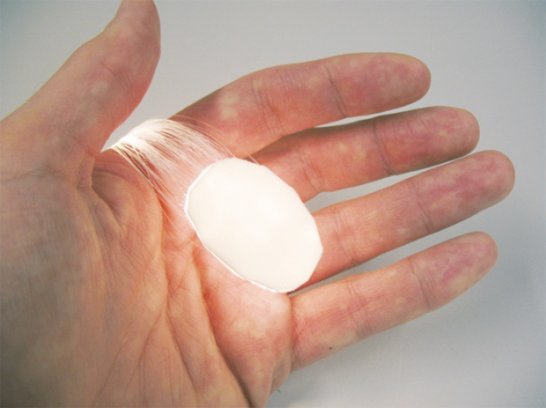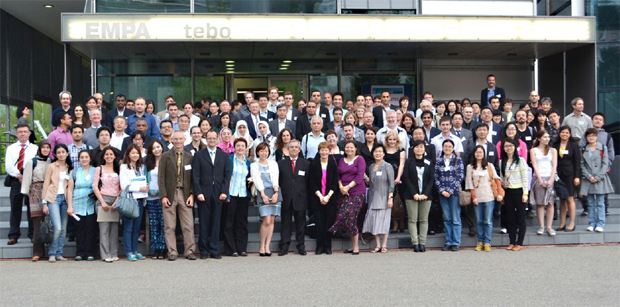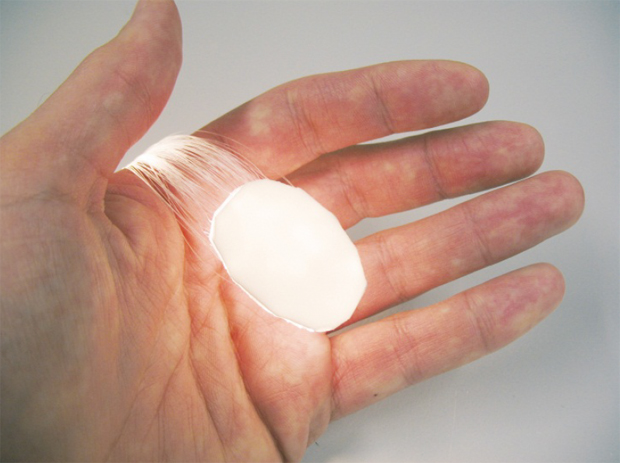Karl Mayer pleased with visitor numbers at ITMA 2019
Exhibitions and Conferences
Researching tomorrow's innovative textiles
Around 200 textile research professionals met at the end of May in St Gallen, Switzerland at the international Fiber Society Spring Conference to keep abreast of current trends in research and development in this field.

13th June 2012
Innovation in Textiles
|
St Gallen
Around 200 textile research professionals met at the end of May in St Gallen, Switzerland at the international Fiber Society Spring Conference to keep abreast of current trends in research and development in this field.
The host organization was Empa, where intensive work is being carried out on fibre and textile innovations.
Although textiles have a tradition extending back thousands of years into antiquity, there still remains room for innovation today, and the aim of this year's Fiber Society conference was to sound out the opportunities on offer in this regard, organisers said.

The society was founded in 1941 to encourage and support scientific progress in the field of fibres and fibre products, and the conference motto, Fiber Research for Tomorrow’s Applications, was therefore entirely appropriate.
The aim is to emphasize the message that, “Textiles have an unbroken potential," as Rudolf Hufenus, of Empa's Advanced Fibers Laboratory and one of the conference organizers, put it in his welcoming address.
Innovation in this field generally takes place as a result of partnerships between groups drawn from various scientific disciplines. Just as important is the intensive cooperation between research institutes and industry, in Hufenus’ opinion.
Organisers say the Fiber Society Spring Conference, which took place from the 23rd to 25th of May, represented the ideal platform for the exchange of ideas and know-how necessary to initiate and plan collaborative projects. The conference was held at Empa's St Gallen site, which has traditionally been heavily involved in innovative work in the textile field.
Empa says there was enormous interest in the event, and the organizers received about twice as many suggestions for expert presentations as they were able to consider. Altogether over 200 scientists from 20 countries attended the event.
“The conference deals with the practical applications of today's fibre research," explained Hufenus, whose own work involves developing novel fibres with his team.

One such example is a fibre for making protective jackets which, although acting like armour to shield the wearer from heavy blows, is still pliant and supple so that the jacket is comfortable to wear.
Empa says the symposium showed that there is a general trend for textiles to find use in new areas of application with high added value, for example in the medical field where implants made of textiles are being used to replace blood vessels or heart valves.
It also notes that the latest developments in conductive fibres are leading to a fusion of electronics and textile technology, with an appropriately large potential for the monitoring of bodily functions and applications in telemedicine.
Empa is itself working intensively on a range of solutions in this very promising area; in all eight Empa staff members presented the latest results of their work during the conference, one being in the area of electro spinning – a process by which fibres of both polymer and purely inorganic material, as well as composites of both, can be manufactured with diameters in the nanometre range. This makes it possible for example to create novel nonwoven textile-based materials for applications in medical and filter technologies, and in catalytic processes.
Further information
Dr. Rudolf Hufenus, Advanced Fibers, Phone +41 58 765 73 41, [email protected]
Dr. René Rossi, Protection and Physiology, Phone +41 58 765 77 65, [email protected]

Business intelligence for the fibre, textiles and apparel industries: technologies, innovations, markets, investments, trade policy, sourcing, strategy...
Find out more










